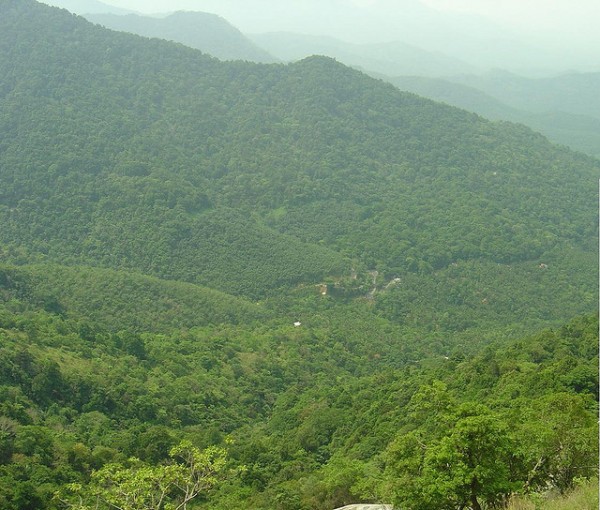A man of many interests, Shawn Steiman is foremost a coffee person. He’s the founder of Hawaii’s Daylight Mind Coffee Company, a roastery, restaurant and coffee lab in Kailua-Kona. He runs his own coffee consultancy, Coffea Consulting. And, with a Ph.D in hand, he is deep into coffee science, publishing research on coffee production, entomology, ecology, physiology, biochemistry oganoleptic quality and brewing.
Steiman is also the author of the forthcoming book from publisher Quarry Books called The Little Coffee Know-It-All: A Miscellany for growing, roasting, and brewing, uncompromising and unapologetic. Steiman has been writing the book, his third on coffee, since August. He describes it as “sciency” in that it includes some “straight-up” lessons on biology, botany and chemistry, and all the information within it is fact-based. But he also hopes the book is approachable and appropriate for anyone who might fit the “coffee-curious” category.
With the permission of the publisher and author, we plan to provide a series of short but useful snippets of The Little Coffee Know-it-All. Up first is a section titled “What’s So Important About High-Altitude Coffee?”
If this question has been burning inside you, Steiman has some answers (see the book for full references):
What’s So Important About High-Altitude Coffee?
by Shawn Steiman Ph.d
It is pretty common to hear people talk about the importance of growing coffee at high elevations. Advertisements for mountain grown coffee date back more than 50 years and coffee companies still brag about coffees that come from high elevations. It makes you wonder if there’s something magical about mountainsides or being far away from the sea.
As it turns out, the scientific data is equivocal on the subject. Some research demonstrates a difference in taste as elevation changes while some does not. Many people in the coffee industry, including this author, have experience that suggests different altitudes produce different cup profiles; coffees grown higher up tend to be more acidy and complex while lower elevations tend to be more intensely coffee flavored. If there really is a difference in elevation, what’s going on?
Any athlete will tell you that the air in thinner at higher altitudes. This is because there’s lower air pressure up there (the weight of all the air that presses down on everything), causing less oxygen to be present in any given breath of air. Plants, however, don’t seem to care much about this. While nobody has tested the effects of different air pressures on coffee plants, researchers doing space research (astronauts need to eat, right!?) have shown that lettuce leaves changed somewhat when grown in different air pressures. However, none of the research examines the taste. Radishes, on the other hand, barely responded at all to different air pressures (unless the air pressure is very, very low). More interesting, the flavor of radishes and some chemical markers that stand in for flavor, didn’t change when the radishes were grown in different air pressure conditions. Lettuce (leaves) and radishes (roots) are different types of plant organs than coffee (seeds), so it is hard to draw a strong comparison from these examples. However, considering the nature of the changes in lettuce and coffee being a seed, it is unlikely that air pressure is influencing the cup quality of coffee.
A change in air pressure is only one difference that happens at higher altitudes. The other is that the temperature drops. It has been well documented that temperature affects many aspects of plant growth and development across a range of species, including food plants like coffee. As air pressure seems not to be too important in influencing coffee’s taste, it is reasonable to assume, then, that the change in temperature at higher elevations is what is influencing our brew.
To support this, we must consider that, across the globe, temperature is influenced not just by elevation. A major factor is latitude. As the distance from the equator increases, temperatures at a given elevation decrease. So, 2500 feet above sea level in Hawaii is a much cooler climate than 2500 feet above sea level in Colombia. Whereas coffee grown in Hawaii at that elevation can be acidy and complex, it is rarely found to be so in Colombia, even though the elevation is the same. While many factors influence the flavor of a cup of coffee, the temperature at which it grows seems to be one of them. Thus, looking at elevation alone is not very useful, rather, the interaction of altitude and latitude and their influence on temperature is what matters.
Nick Brown
Nick Brown is the editor of Daily Coffee News by Roast Magazine.
Comment
1 Comment
Comments are closed.







Thank you very much for having inspired us to do some research on this subject: I have been reading many articles about the impact on altitude on the cupping profile from FNC (Colombia), IHCAFE (Honduras) as well as ICAFE (Costa Rica) and I then cupped 48 different coffees (blind). At the end I have combined the origin with the altitude as well as the cupping notes: https://www.facebook.com/ucccoffeeswitzerland/posts/1018458678229926